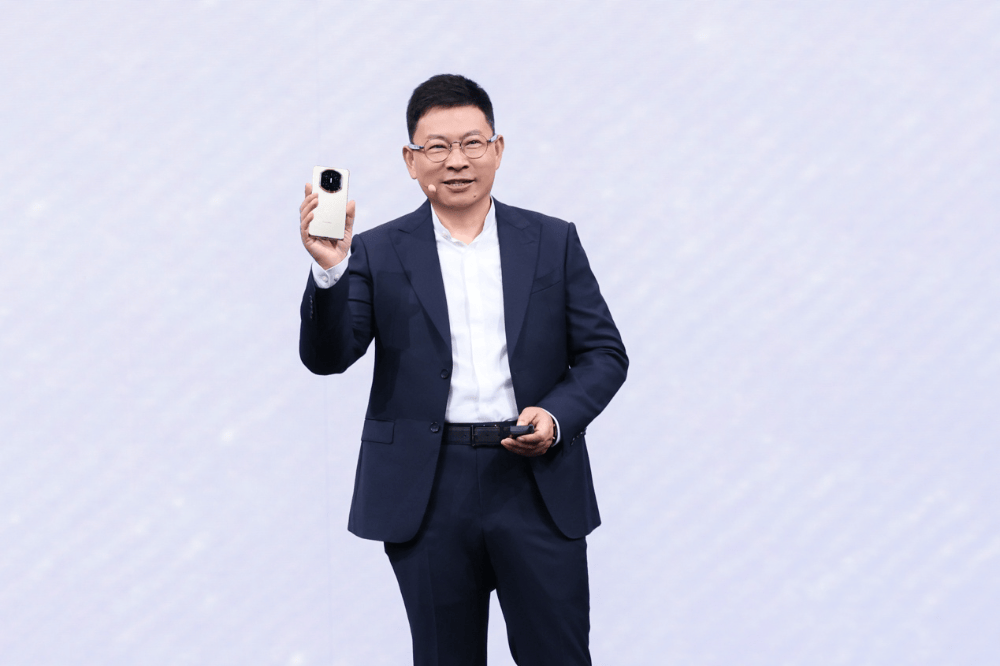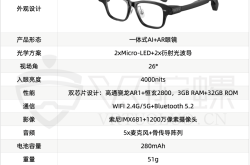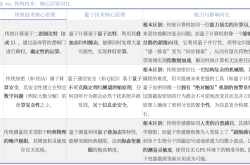Foldable Screens Step into the 'Experience Philosophy' Era: Huawei Mate X7 Unveils More Enchantment with Every Unfold
![]() 11/28 2025
11/28 2025
![]() 451
451
In 2025, the foldable screen market dives into the deep waters of 'intelligent experience.' According to publicly available data from IDC for Q3, the foldable screen market is experiencing a resurgence, with Huawei taking the lead, commanding nearly 70% of the domestic market share. However, consumer preferences have shifted from being merely intrigued by 'novel form factors' to seeking 'scenario-based intelligence' in their devices.
The unveiling of Huawei's Mate X7 dual-fold flagship on November 25th marks a precise revolution that addresses key user experience pain points. With the tagline 'captivating more as it unfolds,' it achieves the first commercial deployment of A2A (Agent-to-Agent) intelligent agent collaboration, transforming foldable screens from mere 'portable tools' into 'all-scenario intelligent hubs.' This move creates a significant generational gap with competitors and solidifies Huawei's position as the 'foldable pioneer' in the industry. 
Revolutionizing A2A Application Synergy: From Tools to Collaborative Partners
Traditional foldable screens simply extend the physical viewing area, whereas the Huawei Mate X7 breaks through this limitation by expanding 'intelligent vision.' The HarmonyOS ecosystem fully showcases its value here, opening up a new future for foldable smartphones.
The Mate X7 achieves the first commercial deployment of A2A intelligent agent collaboration, enabling seamless interaction between Xiaoyi (Huawei's intelligent assistant) and its 'friends' (other intelligent agents) through the Agent-to-Agent protocol. Essentially, Xiaoyi seamlessly connects with agents from other Huawei products, forming a 'Xiaoyi and Friends' cross-application ecosystem. This protocol-level integration transforms fragmented services into a 'one-stop intelligent solution,' covering daily essentials such as clothing, food, housing, transportation, entertainment, and socializing. It delivers richer, personalized intelligent agent interaction services, making the 8-inch inner screen a true 'life command center.' 
The significance of this breakthrough is comparable to that of the original swipe-to-unlock feature. The true innovation lies not in the function itself but in opening up entirely new interaction paradigms. Previously, voice commands could only open apps, with deeper operations confined within those apps. Some manufacturers attempted system-level operations via simulated clicks, but these methods remained cumbersome and prone to disruption by app updates.
Moreover, with nearly all tech firms developing their AI applications, directly substituting them with phone AI would stifle industry growth. Huawei's A2A intelligent agent collaboration model resolves these issues, alleviates manufacturer concerns, and provides system-level wake-up entry points. Finally, the AI revolution gains a practical interaction interface and technological foundation.
In simpler terms, users can issue commands to Xiaoyi, such as requesting an interesting podcast, which automatically invokes the Ximalaya intelligent agent. Planning a flight from Shenzhen activates the Shenzhen Airlines agent for check-in and seat selection. Querying stock information brings up the East Money intelligent agent.
This collaborative approach rapidly equips Xiaoyi with professional capabilities from intelligent agents across various industries. Combined with upgraded split-screen functionality, the phone automatically divides the screen for parallel operations, enabling instant data transfer between left and right screens and millisecond-level execution of user demands. It supports various intelligent scenarios like split-screen Xiaoyi queries, split-screen navigation, and split-screen translation.
For instance, with navigation on the left and restaurant ratings on the right, the foldable screen's large display receives a significant enhancement in the AI era. Honestly, I rarely used split-screen before due to its complexity, but now a simple query to Xiaoyi automatically activates split-screen functions. The new AI + scenario-based split-screen application revolution truly makes the phone a user's intimate companion. 'True smart living requires just one sentence,' and the large screen achieves efficiency reconstruction at this moment.
Configuration Revolution: 'Steel Bones, Gentle Soul' - Eastern Engineering Excellence
Elevating the user experience necessitates hardware upgrades as well. Huawei's absolute leadership in the foldable screen industry stems from its robust hardware reliability, dispelling user concerns about durability.
The Huawei Mate X7 achieves a revolutionary breakthrough in body architecture with its ultra-reliable folding Xuanwu structure. Combining four upgrades—second-generation Xuanwu tempered Kunlun glass outer screen, Xuanwu waterdrop hinge, ultra-tough triple-layer inner screen, and ultra-strong aerospace aluminum midframe—it achieves a super-slim folded thickness of 9.5mm and unfolded thickness of 4.5mm while maintaining comprehensive reliability. This provides users with a worry-free, stable experience. 
Externally, Huawei incorporates the 1,600-year-old intangible cultural heritage Yunjin brocade craft into the phone's back panel for the first time. Innovatively applying nanofiber technology, it weaves 900 warp threads and 1,700 weft threads into exquisite jacquard patterns, achieving a cross-border fusion of technology and art. This back panel is not only visually stunning but also lightweight, high-strength, and impact-resistant, perfectly balancing aesthetics and engineering.
The Huawei Mate X7 also boasts IP58 and IP59 high-level dust and water resistance, passing rigorous tests like 85°C high-temperature spraying and close-range high-pressure water jetting. Compared to its predecessor, its capabilities have further improved. Notably, Huawei's acclaimed Immersive Display technology debuts on the Mate X7, with both inner and outer screens supporting 1-120Hz adaptive refresh rates. The outer screen's 3,000nits peak brightness handles outdoor glare, delivering high clarity, brightness, refresh rates, and fidelity. 
Functionally, it features a second-generation Red Maple True Color camera, a dual-satellite communication system supporting Beidou satellite messages and Tiantong satellite calls, precise parking-level positioning, and offline emergency communication—all significantly upgraded from previous models. Especially in imaging, the Mate X7 breaks boundaries between foldable and bar-shaped phones, integrating professional imaging genes into a slim form factor for top-tier imaging comparable to bar-shaped flagships.
Architectural updates and custom lenses deliver noticeable performance upgrades, greatly enhancing creative freedom. The 'multi-capture' feature lets users press the shutter once to obtain at least one photo or a set of related image data when facing fleeting moments. Users can easily alter photo styles in the editor with options like burst mode, portrait bokeh, and effect styles. AI special effects and large-screen AI assistance unlock diverse creative playstyles, lowering the barrier to professional photography.
For video, the Mate X7 introduces new ultra-high dynamic range video technology, systematically upgrading professionalism, fun, and functionality. It delivers a richer, more exceptional photography experience, becoming a truly foldable imaging flagship. 
Previous foldable screen advancements focused on making products slimmer and more user-friendly. The Huawei Mate X7 clearly prioritizes enhancing performance, marking a crucial watershed. It signifies that after years of iteration, foldable screens have entered a new development phase focused on internal refinement.
Defining the Future: Huawei Mate X7 Unveils More Enchantment with Every Unfold
Every time Huawei launches a flagship product, questions arise about how the next generation will improve. Yet, when the next product arrives, it consistently inspires awe with its innovations. This sentiment is particularly evident with the Huawei Mate X7. Given the limited optimization potential for thickness and weight, Huawei has packed numerous technological breakthroughs into a similar footprint, which is truly remarkable.
Starting with the Mate X7 generation, foldable screens have finally surpassed bar-shaped flagships in performance and imaging. More importantly, the large-screen advantage of foldables remains unmatched by bar-shaped phones. Consequently, foldable screen sales and market share are poised for broader growth and a more promising future. 
Another critical aspect lies in the Mate X7's significant software and hardware breakthroughs. With hardware upgrades and HarmonyOS 6.0 synergy, overall performance improves by 42%.
The 'Gateway to Time and Space' lens module and Yunjin back panel form an Eastern metaphor—folding embodies humble wisdom, while unfolding reveals an inclusive vision. Even more exhilarating is the commercial deployment of A2A intelligent agent collaboration, which truly brings AI into daily life and provides hardware entry points for numerous software applications entering the AI era. Describing this as groundbreaking is no exaggeration. As Xiaoyi integrates with more vertical intelligent agents in healthcare, education, and other fields, foldable screens will become the 'AI passport' for the Internet of Everything.
With its 'HarmonyOS 6 + AI Intelligence + Craftsmanship Aesthetics' trinity, Huawei is set to elevate industry competition from parameter races to experience philosophy. For the foreseeable future, Huawei will maintain its generational lead in the foldable screen market. 
The ultimate mission of foldable screens is to transform users from device servants into scenario poets. As fingers trace the Yunjin patterns to unfold the screen, HarmonyOS 6's computational power surges in the palm, while A2A intelligent agents quietly weave the fabric of life. At this moment, technology sheds its metallic coldness, interpreting the truest future with Eastern wisdom: genuine portability lets the world fold into the palm, while true intelligence makes technology 'captivating' with every unfold.








